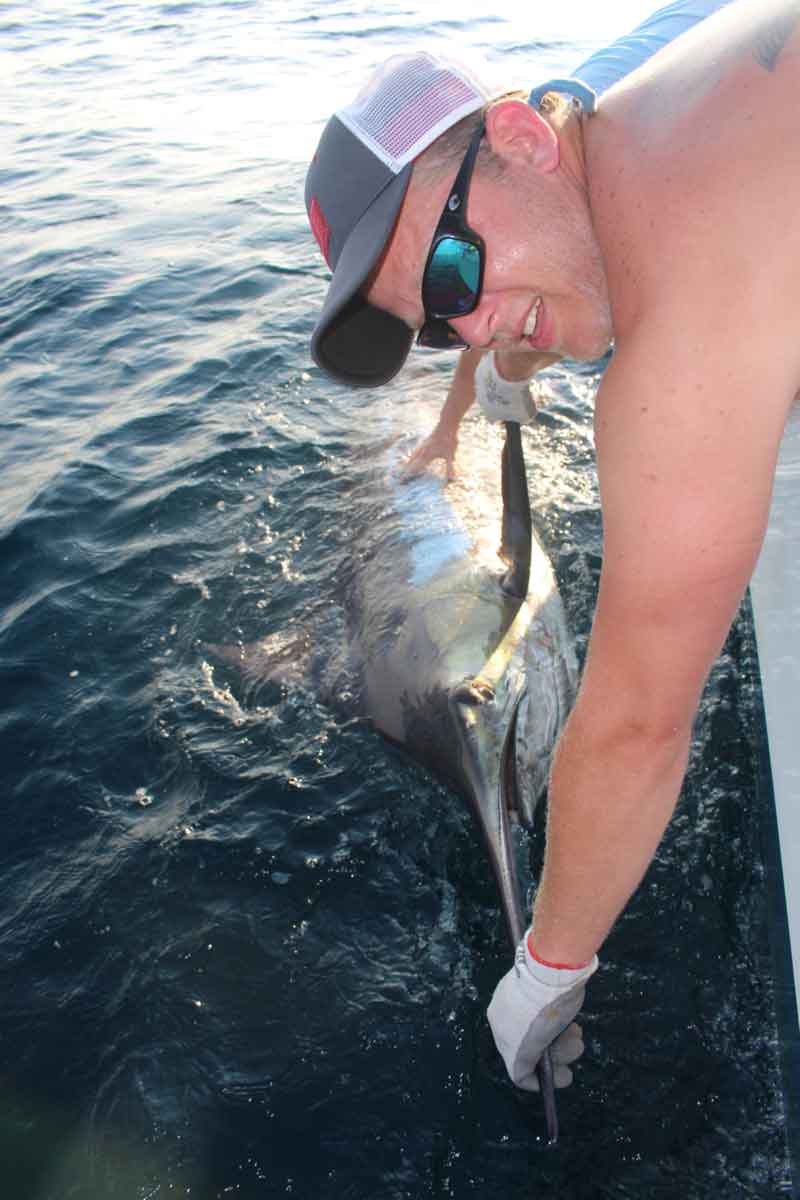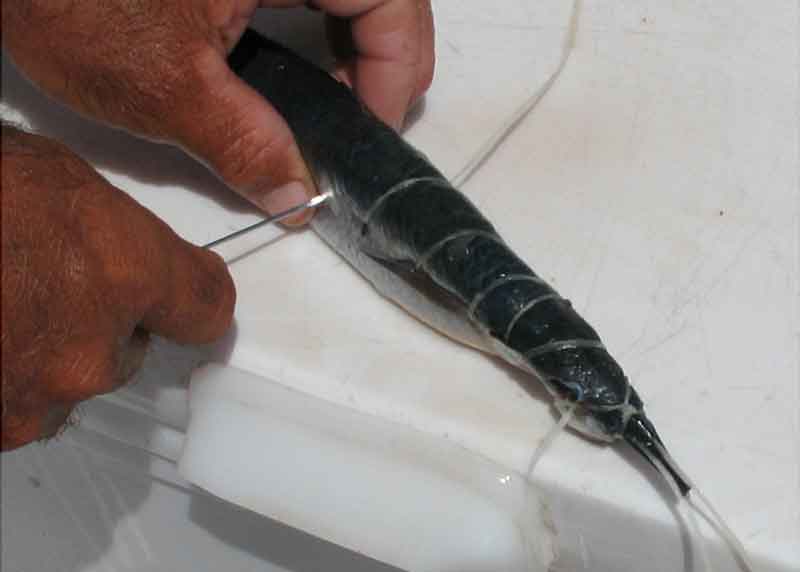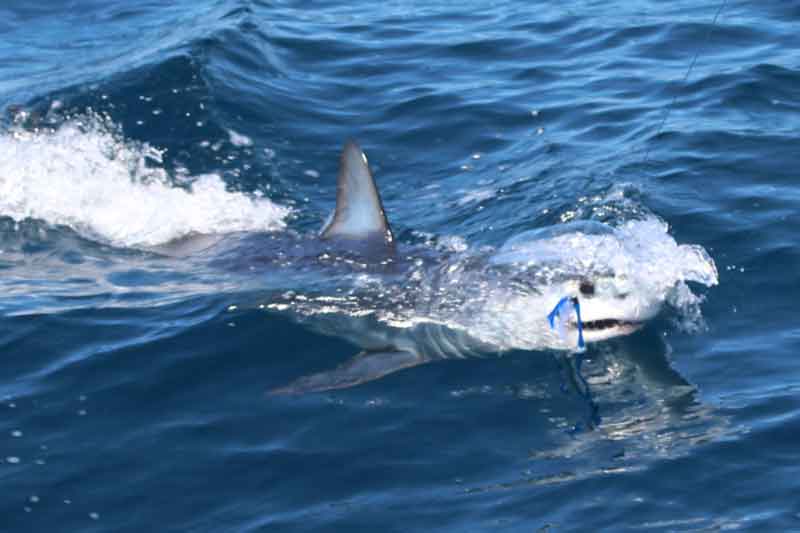You want to find and bait marlin? Set out to fish for bigeye tuna? No one ever hit a 95-mph fastball, shot par on a round of golf, sank three-pointers on the court, or strapped on a pair of skates and slap-shot the puck into the back of the net, without a lot of practice. To become proficient at any sport it takes practice, practice and then more practice. Am I going to compare fishing to these sports? Absolutely! This isn’t to say that a person can’t catch fish the first time they have a rod in hand, but there’s a learning curve, as in any sport. Actually, in some ways I’d say fishing may be more difficult. That little round ball sitting on a tee isn’t going to move, and that rim on that basketball court is always the same height. When it comes to fishing, however, beside learning the art there’s another variable: the fish.

Only through trial and error – practice – can anglers increase their chances of success (assuming that what is learned can be remembered!) Meaning, keep notes on every fishing trip. Over the years your fishing log will become invaluable. Those charter boats throwing limits of tuna on the dock are doing so because of practice, and learned knowledge. Our charter boat was offshore approximately 80 to 90 days a summer with clients chasing tuna and marlin. That means almost three solid months of practice every season. So, what’s been learned during that practice?
Location, Location, Location
Pelagic swim all over the ocean, but species frequent certain areas at different times of year. Studying SST shots cannot be overemphasized; temperature breaks become an angler’s best buddy. Pelagics are naturally attracted to those breaks, following baitfish caught up in the rips or taking refuge in the weedlines that often form along them. Baitfish tend to swim with the current, meaning trolling with current often produces better results, although not always (sure must be nice when that little golf ball doesn’t move!) so crisscrossing or trolling into the current should be tried when the bite is slow. Trolling the cold side of a break normally produces bites before the warm side… then again, some days this doesn’t hold true. Here are some more general locational rules of thumb that are often – though not always – proven true through years of practice:
- Early in the season yellowfin are found trolling in the canyons, following water temps in the upper 60s. As water warms these schools often move inshore on the 30 fathom lumps. Bluefin tuna typically arrive inshore on 20 to 30 fathom lumps before yellowfin.
- Blue Marlin are going to stay in the canyons, seldom venturing inside of 50 fathom line. The same for swordfish, they like a lot of water depth.
- White Marlin are in the canyons during summer and occasionally in on the 30 line. But September is the best time to target them near the 100-fathom line off Delmarva.
- Early season mako can be found following bluefish on the 20-fathom line, but don’t discount larger mako chewing on the small class of early season yellowfin out in the canyons.
- Wahoo, while caught sporadically during summer, increase in numbers on inshore shoals in the fall.

Baits and Rigs
There are countless ways to rig baits, and only through practice can you learn what works for you. What to drag behind the transom, how to set a spread, and at what distances are good questions with a lot of different answers. Which will be right depends on a number of factors, but a typical starting spread is what normally catches you fish.
- Once you realize (and you eventually will!) that a blue/white Ilander skirted over a medium ballyhoo produces fish, it is probably always going to be in the spread – as it should be. But don’t be afraid to experiment by swapping out lures or rigged bait on slow days. After all, you are trolling and this is practice, so practice.
- Dark colored skirts typically work better at dusk and dawn or on cloudy days. If targeting wahoo, I’m dragging dark skirts and lures all day. I normally keep a dark colored skirted ballyhoo pulled off a planer line as well. When it’s slow, I may try swapping out to a 5.5-inch Drone.
- When chunking with butterfish for yellowfin, having a five-gallon bucket of peanut menhaden you cast-netted the night before and put on ice can turn on the bite and have yellowfin busting behind the transom.
- Catch a few live spot and take them along in the live well. If drifted back in a chunk line, chances are they won’t be there long.
- I believe squid are eaten by everything swimming offshore, so why not troll rigged squid or use them when chunking? (Check out my YouTube video for an easy way to rig squid for trolling or chunking). Hand feeding a rigged squid back in the chunk line often catches tuna when their noses are turned up at butterfish.
- Is the plan to change over and bail mahi, when you stumbling upon that floating pallet while trolling? Everyone cuts up chunks of bait (typically ballyhoo or squid) to entice mahi into feeding. However, often lock-jaw may occur after a few are hooked up, leaving anglers watching the mahi swim up to the bait, but not inhaling it. Well, throw a handful of live minnows in the water and watch what happens. Suddenly the mahi will decide that they want to eat again.
- Remember to save that first false albacore you caught. We may not eat them, but chunked up, mahi find the red meat just about irresistible.
- Those spreader bars churning up the surface are mighty tasty looking treats to yellowfin and may draw an entire school to the surface. Meaning, don’t slow the boat down after the first rod goes off – multiple hookups are what fills the kill box. Once a rod goes down, have crew grab the other lines and put action into the baits by jigging them. This should be and eventually becomes automatic, but only through practice.
- Should you use wind-on leaders or use swivel-to-leader rigs? Both methods work, but you need to practice with both setups to find your preferred rigging method. For years I used a Bimini with 12 feet of double line to a cat’s paw knot securing a swivel, to which a 15-foot leader was attached. But after fishing Costa Rica a couple winters, I became sold on wind-ons. They reduce the need to wire fish by hand that last 15 feet, and the mate only needs to guide leader as the angler winds leader onto reel until fish can be gaffed.

Tactics and Technique
Effective trolling techniques can vary from day to day, much less week to week and month to month. Once again, practice is the key to being able to figure out which will work best at any given time. During the dog days of summer one August, sweltering 100-degree days and high pressure settled right over our region; the fleet was having a hard time putting clients on fish. One captain resisted the urge to run out to the canyons with everyone else, and stuck it out on the 30-fathom line trolling slowly at four mph in the slick calm water. At days end he had a marlin release and handful of yellowfin and mahi. Needless to say, most of the fleet was inshore the next day, catching a few fish for their clients. It is difficult to say what will work from one day to the next, but…
- Always keep an eye on your baits, and adjust speed so rigged baits looks like they’re swimming naturally.
- Studies have shown that bluefin spend majority of time from an hour before sunset until an hour after sunrise near the surface. Once the sun rises, they descend to a depth of about 80 feet. As a result, planers can become your best friend when trolling for bluefin during midday. Or if chunking, whole butterfish suspended under floats down 50 to 100 feet down are going to increase your chances of bluefin hookups during daylight.
- Write everything down, and study the information you’ve gathered in the past before trips. Gather as much current data as you can (in other words, visit the Coastal Reports) on what species are being caught, when, where, and on what bait, and go practice. That's all every trip is – just practice! The more time you spend offshore practicing, the better an angler you become. Sure, it may cost some anglers a marriage or a job here and there, but that's the price one has to pay. No one is going to bowl a 300 without practice, and you’re not going to catch a grand slam without the same.
So go ahead, tell me one more time how hard it is to hit that little golf ball…
By John Unkart, author of “Offshore Pursuit” and “Saltwater Tales.” Find Unkart's books on Amazon.